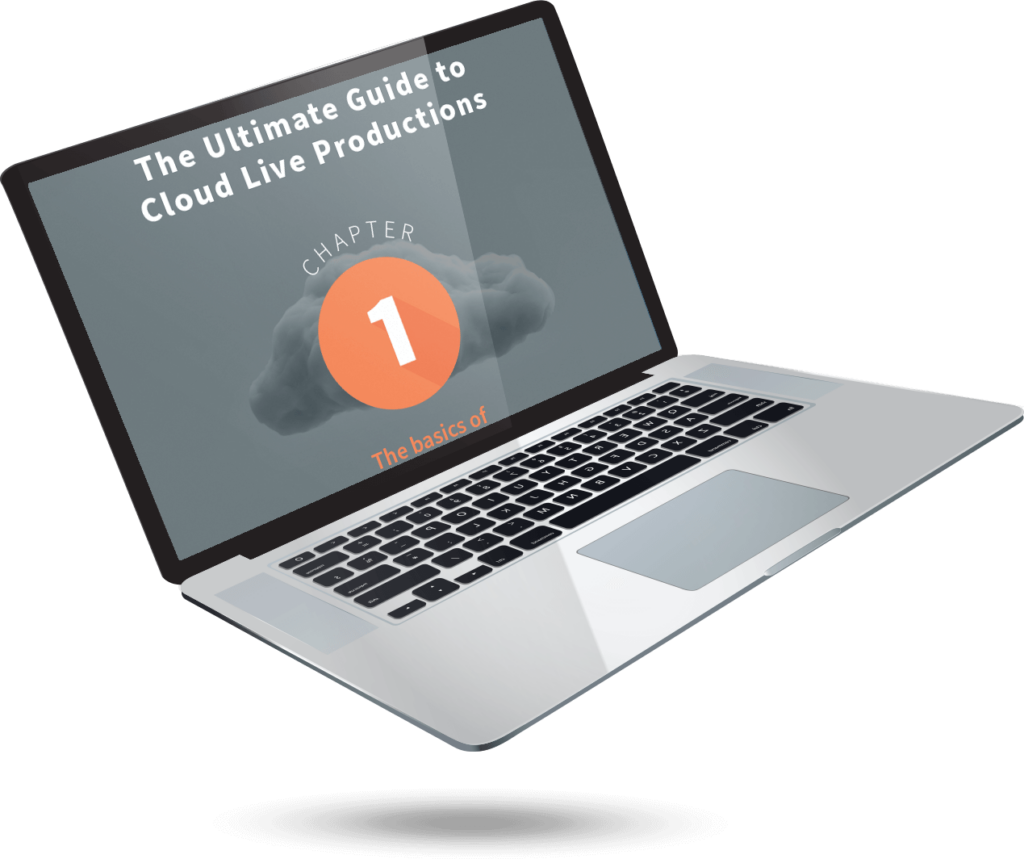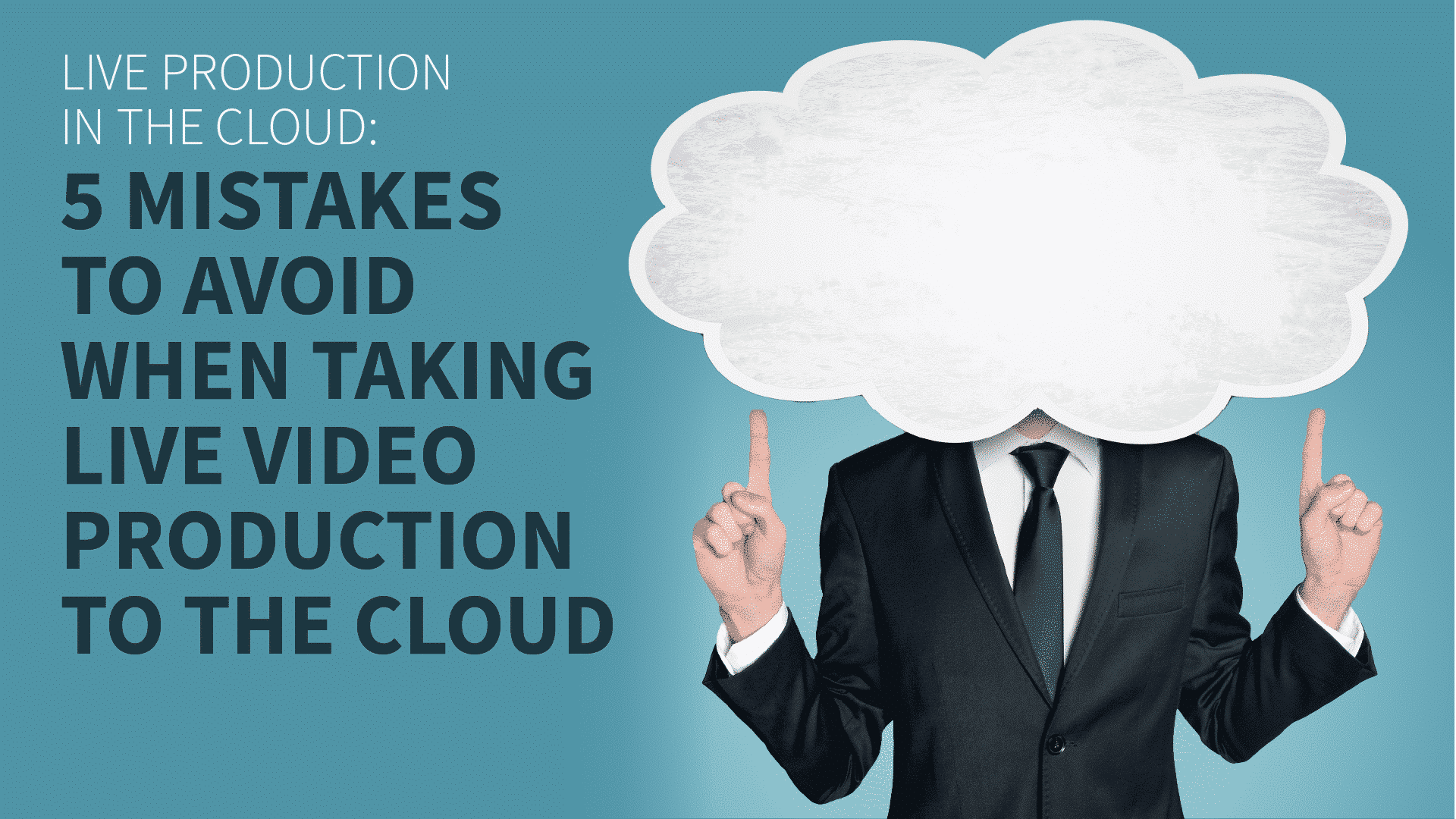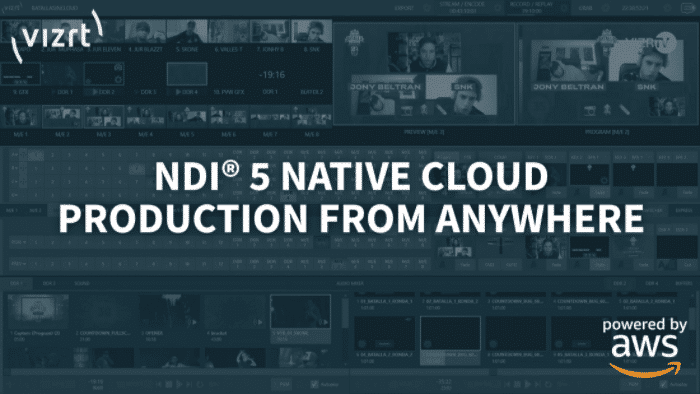Cloud production. We all know what the dream is: reduced costs, greater flexibility and control, faster turnaround, and the reassurance of having unlimited production capacity available ‘on demand’.
Live video production can be a complex challenge at the best of times. Going NDI® native and cloud-ready offers content producers the opportunity to rationalize workflows around a future-facing architecture, that is by its very nature more IP than copper, more software than hardware, but considerable care must be taken when seeking to unlock the potential. Get it wrong and the dream can swiftly turn into a costly nightmare.
Let’s look at five of the most common challenges that should be addressed when moving to the cloud:
Mistake #1: Lack of Security
Sony Pictures found out the hard way what it means to have an IT security breach when a group of hackers exacted revenge on them for producing a movie that they believed slighted the North Korean leader, Kim Jong-un. Not all security issues are as high impact or high profile, but security concerns remain one of the most common challenges that organizations face in moving to the cloud.
The Media and Entertainment industry is content-driven – having access and the rights to leverage content is how value is generated, so trusting a third party to protect and secure data assets is an unpalatable reality.
How to avoid it: Identity and verification, access control, privacy security, data recovery, and transparent credentials all need to be considered when selecting partners for cloud-based activities. Alongside these technical factors, it’s useful to consider the vendor’s reputation. Seeking to partner with a provider that has as much, if not more to lose than you — should the worst happen — can reinforce the level of care that is taken to protect your assets.
Mistake #2: Not considering cost
With Gartner estimating that worldwide spending on public cloud services will top $364 billion by 2022, it’s clear that there’s lots of OpEx flowing around in this market. Early adopters of cloud-based architecture soon found the costs they encountered were prohibitive and rapidly redesigned their deployments. Dropbox is a great case in point, detailing in its 2017 filing with the US Securities and Exchange Commission, how it saved $75M by optimizing its usage of cloud services. Indeed, analysts Andreessen Horowitz estimate that poor optimization of cloud services could be responsible for wiping $100bn off the valuation of just the top 50 public software companies currently utilizing cloud infrastructure.
How to avoid it: Selecting a design that is right for the use case and looking to establish a sustainable balance between cloud and on-premises deployments all help in protecting an organization from unwanted additional costs.
Mistake #3: Lack of skills/expertise in cloud deployment
Gartner (again) in a survey of 437 global firms, found that the shortage of cloud talent was the largest barrier to deploying emerging technologies. For many organizations in the M&E space, the migration from SDI to IP has been challenging as incumbent skillsets needed to be adapted and aligned with new, more IT-centric talent and skills.
How to avoid it: The step to the cloud stretches that resource pool once again, with the need to evolve beyond a dev-ops model to one that enables versioning, configuration, orchestration, and operations across a multi-vendor landscape. When facing the complexity of the cloud, many content creators look to partner with experts who have a strong track record of delivery in this space.
Mistake #4: High latency
Physics is great but it can also provide rules that are not universally helpful. In a remote and elastic compute model, like ‘cloud’ there are several factors that can introduce latency (the key measure of delay) to something like live video production. A constant thorn in the side of production teams is the speed of light. It simply cannot move through glass fiber any faster than it constantly, currently does and therefore takes time to get point A (perhaps a sports field in Amsterdam) to point B, a remote computing facility (perhaps a data center in Dublin).
As video is data heavy, we may want to compress it to reduce the amount of information we need to move around— the coding and decoding of that both take computing effort, which takes time. Add to that prudent network overheads designed to ensure integrity and quality and yet more time is absorbed. If you want to take Camera 3 for the close-up of the ball leaving the tee, you want your remote button press on a cloud-based switcher to, almost immediately, connect that input to your program mix. Too much latency and you’ll have missed the shot.
How to avoid it: Technical developments have all helped to manage latency, be that data or control signal latency, choosing the right codec and transport protocol (have a look at NDI) to the clever use of synchronization and well-designed workflows. With the right approach, latency need not be a showstopper.
Mistake #5: Lack of data clouding your judgment? (Pun intended!)
Like any ‘hot topic’ much is said and written about the cloud, and many of the ‘experts’ disagree on the best way to proceed. With so many buzzwords and a lack of a well-thumbed playbook, the cloud has earned a reputation for being complex and costly. It can be helpful to focus in on the desired outcome, rather than the deployment method. If scalability and flexibility are required, then ‘cloud’ can play a powerful part in a content pipeline. But you’ll likely want to control costs, ensure quality and security, and enhance reliability. In short, it’s best to partner with people who have a tried and tested set of solutions to help you find your own balance between cloud and on-prem. The focus should ultimately be on the content, not on the compute location!
How to avoid it: Understanding what the cloud means for you is a good place to start. You may want to watch this demonstration video, where AWS joins Vizrt in demystifying cloud-based live production issues and showing you how to make the cloud a trusted element of your content pipeline.
The sports and arts that underpin live production are themselves underpinned by creativity, agility, and impulse. How those three attributes are essentially channeled becomes the live performance that producers are seeking to share with wider audiences. Likewise, live production over IP relies on many attributes: you need to understand the creative promise of the cloud but also how to mitigate the risk; how also to tap the commercial potential of the cloud and not get caught as some consultant’s ill-conceived architectural opus. The five mistakes listed above have been made countless times so that you can now avoid them and capitalize on the phenomenal scale and versatility that cloud solutions present.

Ultimate Guide to
Cloud Live Productions
Get a comprehensive understanding of cloud live productions with Vizrt’s Ultimate Guide. All you need to know about innovative technology for successful live productions. Download now and enhance your live production.


















